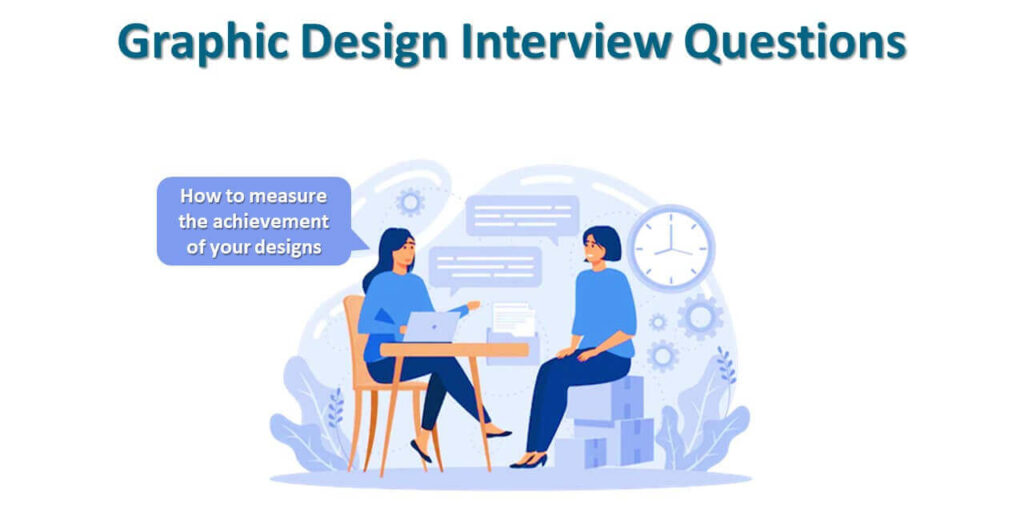Graphic Design Interview Questions and Answer

The Graphic Design Interview Question to help you crack your interview to get hired on the first attempt. Graphic Designing is a dynamic and creative profession that plays a crucial role in visually communicating ideas, messages, and concepts. Aspiring Graphic Designers often face interviews that evaluate their skills, knowledge, and compatibility with the part. To help you prepare effectively, this blog presents the most common.
1) What is Graphic Designing?
Graphic Design is a dynamic and interdisciplinary field that involves the creative and strategic use of visual elements to communicate messages, information, and ideas. It encompasses the art of combining typography, images, colours, shapes, and other design elements to produce visually appealing and Effective Communication materials. These materials range from traditional print designs like brochures, posters, and magazines to digital designs for websites, mobile apps, social media, and more.
Graphic Design aims to convey information and evoke emotions through visual storytelling. Designers leverage their creativity, technical skills, and understanding of Design Principles to transform abstract concepts into tangible visuals that resonate with their target audience. Effective Graphic Design captures attention and delivers a clear and memorable message while maintaining a harmonious balance between aesthetics and functionality.
2) Why did you choose to become a graphic designer?
A graphic designer must have creative zeal and passion towards their profession. Through this question, interviewers assess what drives the candidate.
Share your experiences with design, educational background, and skills that make you a good graphic designer.
For Example: I chose to become a Graphic Designer as it resonated with my creative zeal and allowed me to showcase my talent. I loved drawing and doodling ever since I was a kid.
Graphic designing makes my interest a profession and lets me create impressive designs that impact people.
3) Where do you get design inspiration from?
When your hiring interviewer asks this question, they want your answer to show your passion for design. Try dividing your answer into two parts:
- First, you could mention the practical resources you use to stay on top of trends: design and style blogs you read, industry influencers you follow, and the curated social media accounts that give you great design ideas.
- Second, to show your depth as a Designer and a creative thinker, you should also be prepared to talk about less-obvious sources of inspiration, whether it’s nature, art, travel, or any other activity that captures your interest and puts you in a creative mindset.
4) How do you approach a design project?
Describe your step-by-step approach from research and creativity to wireframing, prototyping, refining, and final execution. Emphasise your ability to maintain a cohesive workflow.
For Example: “My approach involves thorough research and ideation. For a web design project, I began by researching the target audience and competitors, then created wireframes to visualise the layout and interactions before moving on to the final design.”
5) What is your favorite type of design project and why?
For Example: “I enjoy working on branding projects the most because they allow me to create a cohesive visual identity that resonates with the target audience.
I find it rewarding to develop logos, color schemes, and brand guidelines that reflect a company’s values and aspirations.”
6) What is A/B testing, and how might it apply to Graphic Design?
Explain how A/B testing can be used to test different design variations to determine which performs better regarding user engagement and conversions.
For Example: “A/B testing involves comparing two design variations to determine which performs better. For a call-to-action button, I tested different colours and text to identify the version that yielded a higher conversion rate.”
7) What is UX design? Could you provide an example of appealing UX?
For Example: UX design is a design process that aims to improve the user experience through testing and research, rather than only through aesthetics. User experience is crucial for attracting and retaining customers, and so is UX design.
An example of good UX design would be the Zara website, which uses a simple, minimalist design. Its search bar and navigation menu are easy to find, and its central image dominates the page. The logo is bold and contrasts with the white background.
8) Which are the primary types of graphic design projects?
For Example: There are five main types of graphic design projects:
- Graphic design projects for exterior/environmental spaces
- Digital design and UI/UX design
- Projects that involve in-motion elements, such as a presentation
- Advertising and marketing design
- Product design
9) Can you name some components that are crucial in graphic design?
For Example: There are seven critical components in graphic design:
- Color (and Color theory)
- Typography (and how it relates to the design)
- Texture
- Shape
- Space
- Scale
- Line
10) Explain what 3-dimensional graphic art is.
For Example: 3-dimensional graphic art helps designers create animation for digital purposes that is suitable for backgrounds or landscapes.
The 3-dimensional models facilitate the process of spatial visualization, enabling designers to see details that would be impossible to see otherwise.
11) Describe a time when you missed a project deadline. How did you adjust your design process after that?
For Example: In my previous role, I missed a project deadline because I didn’t factor in the length of time it’d take to incorporate a minor change a client requested. The margins and white space of the newsletter I had designed were not big enough, so this project carried over to the following day.
I have since learned to focus on time management as a skill. I read blogs and articles that give graphic designers advice on how to manage time more efficiently. Subsequent projects were delivered on time and well received.
12) Why is communication critical when completing graphic design projects?
For Example: In my opinion, communication is critical not only for understanding and discussing design briefs but also for making changes, incorporating feedback, and requesting support from others when working with tight deadlines.
Frequent communication with the team is essential, and regular check-ins with my clients help align my creativity with their vision. It also helps me share the underlying brand messages effectively and make sure it meets the clients’ needs.
13) How do you approach a design project?
Describe your step-by-step approach from research and creativity to wireframing, prototyping, refining, and final execution. Emphasise your ability to maintain a cohesive workflow.
For Example: “My approach involves thorough research and ideation. For a web design project, I began by researching the target audience and competitors, then created wireframes to visualise the layout and interactions before moving on to the final design.”
14) Do you prefer to work as part of a team or independently?
For Example: Over the course of my career, I’ve worked with various teams and had multiple solo design projects. Both work styles present difficulties and have their advantages.
Even though communication difficulties can occur when working with others, I prefer to work as part of a team, because it allows you to bounce ideas off one another, manage time more efficiently, and offer each other advice.
15) What design tools do you use frequently? Which are your favorite?
For Example: I am a big fan of the Adobe Creative Suite. My favorite design tools are Adobe Illustrator, Adobe Photoshop, Adobe XD and inDesign. I use them all in my design practice. I am fond of them because they all offer a variety of tools that allow me to create professional-quality designs and export them in the formats that my clients expect.
16) Why is typography important?
For Example: Typography plays a key role in how information and ideas are communicated in visual design – making it an essential element of design. When implemented strategically, typography can make a design more visually appealing, help create a hierarchy of information, establish a mood, and support the overall concept of the design.
17) What does your design process encompass?
For Example: With each project, my design process varies slightly. However, I usually implement the following steps:
- Identify the problem that my designs need to solve or address
- Research and aggregate relevant information and inspiration for the project
- Develop an overall concept for the design
- Create sketches, wireframes, or mockups to explore different design options
- Consult with my client or design team to decide on a concept
- Refine and develop the chosen concept
- Present the design to the client or internal design team for constructive feedback
- Refine and finalize the design for implementation
18) What has your past experience taught you about this career?
Graphic design requires both creative and technical skills. This question will help you understand what the candidate has learned from their previous experience and if they have the skill set required for the job. If they don’t have much experience, you can ask them what they’ve learned from their education or other projects they’ve worked on — don’t discount other life experiences, too.
Listen for: Their ability to take criticism, if they work well under pressure and what they do to make sure they meet deadlines. The candidate should also be able to adapt their designs based on the needs of the client or project.
19) What qualities and skill should a graphic designer have?
Some of the good qualities and skills a graphic designer should have:
- Passion and drive
- Curiosity
- Problem-solving
- Openness
- Reliability
- Evolution etc.
20) How do you incorporate feedback into your designs?
Feedback is a critical component of the design process. This question assesses your receptiveness and ability to iterate constructively. Share examples where client or team feedback led you to rethink and improve your design. It shows your humility, adaptability, and commitment to delivering work that meets or exceeds expectations.



